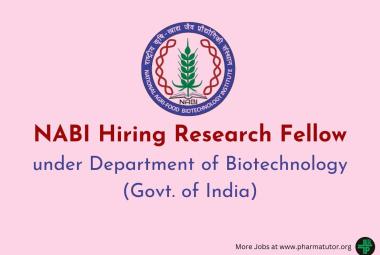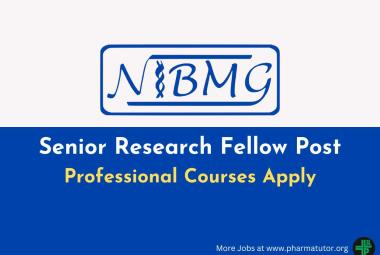{ DOWNLOAD AS PDF }
 ABOUT AUTHOR:
ABOUT AUTHOR:
Mohammad Asif
Department of Pharmacy, GRD(PG) Institute of Management & Technology,
Dehradun, (Uttarakhand), 248009, India
aasif321@gmail.com
ABSTRACT:
The reappearance of tuberculosis and the rush of multidrug-resistant clinical isolates of Mycobacterium tuberculosis have reaffirmed tuberculosis as a key public health concern. Describe findings on the pharmacological status of Benzothiazinones as new agents that are being developed as antitubercular drugs. Benzothiazinones act by targeting the enzymes responsible for the formation of arabinans that are essential parts of the cell wall. In view of their novel mechanism of action, these drugs appear promising as anti-TB drugs and considered to be promising candidates for future development.
[adsense:336x280:8701650588]
REFERENCE ID: PHARMATUTOR-ART-2333
|
PharmaTutor (Print-ISSN: 2394 - 6679; e-ISSN: 2347 - 7881) Volume 3, Issue 5 How to cite this article: M Asif; An overview on Benzothiazinone analogs as Antitubercular Drugs; PharmaTutor; 2015; 3(5); 15-18 |
INTRODUCTION:
The recent rise in tuberculosis (TB) cases, due in particular to the increased incidence of Mycobacterium tuberculosis infections in HIV-infected individuals, has prompted a vigorous search for new drugs for the treatment of this disease. Increased infection with the M. avium complex (MAC) is also contributing to the morbidity and mortality in AIDS patients. In this context, it is important to consider that the most urgent goal of chemotherapy of TB and MAC infections should be the development of highly active and low-cost drugs that can be used not only in industrialized countries, but also in developing countries in which TB and disseminated MAC infections are now rapidly increasing[1-3] The progressive immunological deterioration seen in AIDS is often accompanied by opportunistic infections including tuberculosis (M. tuberculosis) and non-tuberculosis (M. avium) mycobacterial diseases. Treatment of these infections, along with other opportunistic infections that cause the majority of all AIDS-related deaths, is often complicated by patient intolerance of the drugs employed or pathogen resistance to conventional drug therapy. The main drugs currently used to treat TB are Isoniazid, Rifampicin, Pyrazinamide, Ethambutol and Streptomycin, and for most of them, the mechanism of action is known. Nearly 19% of TB isolates in a hospital were resistant to Isoniazid and Rifampicin, the two most common antitubercular agents. In general, the resistance to INH and Streptomycin is more common than resistance to Rifampicin, Ethambutol and Pyrazinamide. For empiric treatment of all M. tuberculosis infections, even if drug resistance is not suspected, the 4-drugs regimen of Isoniazid, Rifampicin, Pyrazinamide and Ethambutol or Streptomycin is recommended, until susceptibility results become available. Duration of therapy should be at least one year [4,5]. Regarding the strategy of the search for new, effective compounds with a different mode of action is the most challenging, but also the most likely approach for discovering new agents that may shorten the treatment period and provide solutions to both the drug intolerance and drug-resistance problems. Moreover, the strategy related to the genome of M. tuberculosis. This, coupled with the increasing knowledge of various mycobacterial virulence genes, will promote the identification of genes that code for potential new targets [5].
[adsense:468x15:2204050025]
BENZOTHIAZINONES:
A new class of drug with antimycobacterial activity, 1,3-benzothiazin-4-one or benzothiazinone (BTZ), was recently described [6]. The lead compound, 2-[2-S-methyl-1,4-dioxa-8-azaspiro[4.5]dec-8-yl]-8-nitro-6-(trifluoromethyl)-4H-1,3-benzothiazin-4-one (BTZ043) was found to have activity against M. tuberculosis. It was found to be active against drug-susceptible and MDR clinical isolates of M. tuberculosis [7]. Structure of BTZ043 is shown in Figure 1.
 Figure 1. Structure of 1,3-benzothiazin-4-one (BTZ043) (1).
Figure 1. Structure of 1,3-benzothiazin-4-one (BTZ043) (1).
The 1,3-benzothiazin-4-ones (BTZ) kills M. tuberculosis by blocking arabinan synthesis. The most advanced compound, 1,3-benzothiazin-4-one (BTZ043) (1), was found to a candidate for inclusion in combination therapies for both drug-sensitive and extensively drug-resistant TB [6]. By transcriptome analysis, the mode of action of BTZ043 was initially spotted at the cell wall biogenesis level. By further genetic analysis, using in vitro generated mutants, the target of the drug was identified at the level of the gene rv3790, which together with rv3791 encode proteins that catalyze the epimerization of decaprenylphosphoryl ribose (DPR) to decaprenylphosphoryl arabinose (DPA), a precursor for arabinan synthesis needed for the bacterial cell wall [8]. DprE1 and DprE2 were proposed as names for these two key enzymes [6]. More recent studies have characterized more precisely the mechanism of action of BTZ043 by showing that the drug is activated in the bacteria through reduction of an essential nitro group to a nitroso derivative, which can react with a cysteine residue in DprE1[9]. In studies with M. smegmatis, an alternative mechanism of resistance has been suggested. The overexpression of a nitroreductase NfnB led to the inactivation of the drug by reducing an essential nitro group to an amino group [10]. Although M. tuberculosis apparently lacks nitroreductases able to reduce the drug, this finding could be important for development of new BTZ analogues with improved activity. A series of piperazine-containing 1,3-benzothiazin-4-ones has been reported. The lead compound PBTZ169 has improved activity, safety and efficacy in animal models and has shown in vitro synergy with bedaquiline signaling it as an attractive new compound for further drug development [11,12]. The nitro-benzothiazinone (BTZ) class was derived from a series of sulfur-containing heterocycles to develop antibacterial and antifungal agent. BTZ-043 (1), the most promising compound among the benzothiazinones, shows high antitubercular activity in vitro, in macrophages, and in the murine model of chronic TB [6]. The sulfur atom and the nitro group at positions 1 and 8, respectively, play a critical role in bactericidal activity. When the nitro is replaced with either an amine or a hydroxylamine at position 8, the resulting analogs show a 500 to 5,000-fold decreased activity [6]. More than 30 different BTZ derivatives showed MICs of less than 116 nM against M. tuberculosis. Electron-withdrawing group such as CN, CF3, and Cl at the R1 position and 1,4-dioxa-8-azaspiro[4.5]decane groups with methyl substituents at R2 show promising activity against M. tuberculosis. The BTZ class of compounds is thought to inhibit decaprenylphosphoryl-b-D-ribose 20-epimerase, hereby preventing the conversion of decaprenylphosphoryl ribose (DPR) into decaprenylphosphoryl arabinose (DPA), which is a substrate for the arabinosyltransferases of mycobacterial cell wall synthesis [8]. The MIC of BTZ-043 against M. tuberculosis H37Rv is 2.3 nM [6].
 Minimum pharmacophore
Minimum pharmacophore
Fig.2 Structure of BTZ-043 pharmacophore
Despite the 100-fold better in vitro activity of BTZ-043 against M. tuberculosis than frontline agents such as INH, its in vivo effect during treatment of chronically infected mice was comparable to that of INH and RIF. In mice, BTZ-043 has a t1/2 greater than 2 h, a Cmax of 2 mg/mL, and an AUC of4.6h.mg/ml [6]. It is also relatively stable to degradation by human liver microsomes and shows less than 20% inhibition of various cytochrome P450 enzymes. BTZ-043 showed high activity against clinical isolates of M. tuberculosis including multidrug resistant (MDR) and extensive drug resistant (XDR) M. tuberculosis strains [7]. This compound is in preclinical development and will soon enter phase I clinical trials.The 1,3-benzothiazin-4-ones represent a new class of drugs, which have activity against M. tuberculosis [6]. The 1,3-benzothiazin-4-ones are activated in M. tuberculosis by reduction of an essential nitro group to a nitroso derivative, which then specifically reacts with a cysteine residue in the active site of the enzyme decaprenylphosphoryl-β-D-ribose 2'-epimerase (DprE1) [9]. Inhibition of this enzymatic activity abolishes the formation of decaprenylphosphoryl arabinose, a key precursor that is required for the synthesis of the cell-wall arabinans, thus causing bacterial lysis and death [6]. Although spontaneous BTZ-resistant laboratory mutants were found to have a Ser or Gly substitution at codon Cys387 of dprE1, resistance to benzothiazin-4-ones has not been reported in clinical M. tuberculosis isolates [7]. Recently, a novel resistance mechanism to The 1,3-benzothiazin-4-one was described in M. smegmatis involving the overexpression of the nitro-reductase NfnB, which leads to the inactivation of the drug by reduction of a critical nitro-group to an amino-group [10]. However, M. tuberculosis seems to lack nitroreductases able to inactivate 1,3-benzothiazin-4-ones.
DISCUSSION:
The strategies followed to generate new TB therapies may involve developing new drugs from existing lead molecules used to treat other bacterial infections. Modifying the existing drugs to improves anti-TB activities and pharmacokinetic properties to make it less susceptible to the known mechanism of resistance. This is the strategy adopted in developing new anti-TB drug analogues. Discovering new drugs either by random screening or if a specific target is kown, by a rational design. In this context the strategies led to the identification of drugs, such as new Benzothiazinones, as active agents [13-15]. Since resistance will likely develop upon prolonged treatment, such agents will always be used in conjunction with one (or perhaps more) other anti-TB drugs to which mycobacteria is susceptible.
CONCLUSION:
Benzothiazinones have demonstrated in vitro and in vivo activity against M. tuberculosis and they also penetrate human macrophages in which mycobacteria survive and appear to have promising activity against TB. The antibacterial effects of the Benzothiazinones, have been extended to include anti-TB activity. In general, they are used in combination with at least one other drug in order to prevent resistance.
REFERENCES
1. Asif M, Singh A, Lakshmayya; The development of structurally different new antitubercular molecules containing pyridazine ring system. Chronicle of Young Scientist; 2013, 4(1), 1-8.
2. Asif M, Siddiqui AA, Husain A; Quinolone derivatives as antitubercular drugs. Med Chem Res; 2013, 22(3), 1029-1042.
3. Asif M.; Rifampin and Their Analogs: A Development of Antitubercular Drugs. World J Org Chem; 2013, 1(2), 14-19.
4. Asif M.; Study of clinically used and recently developed antimycobacterial agents; Orien Pharm & Experi Med; 2012; 12(1); 15–34.
5. Biavaa M, Porrettaa GC, Deiddab D, Pompeib R.; New Trends in Development of Antimycobacterial Compounds; Infectious Disorders-Drug Targets; 2006; 6(2); 159-172.
6. Makarov V, Manina G, Mikusova K, Möllmann U, Ryabova O, Saint-Joanis B, Dhar N, Pasca MR, Buroni S, Lucarelli AP, et al; Benzothiazinones kill Mycobacterium tuberculosis by blocking arabinan synthesis; Science; 2009; 324; 801–804.
7. Pasca MR, Degiacomi, G Ribeiro AL, Zara, F, De Mori P, Heym B, Mirrione M, Brerra R, Pagani L, Pucillo L, et al; Clinical isolates of Mycobacterium tuberculosis in four European hospitals are uniformly susceptible to benzothiazinones. Antimicrob. Agents Chemother; 2010, 54(4), 1616–1618.
8. Mikusová K, Huang H, Yagi T, Holsters M, Vereecke D, D’Haeze W, Scherman MS, Brennan PJ, McNeil MR, Crick DC; Decaprenylphosphoryl arabinofuranose, the donor of the D-arabinofuranosyl residues of mycobacterial arabinan, is formed via a two-step epimerization of decaprenylphosphoryl ribose; J. Bacteriol; 2005; 187(23); 8020–8025.
9. Trefzer C, Rengifo-Gonzalez M, Hinner MJ, Schneider P, Makarov V, Cole ST, Johnsson K; Benzothiazinones: Prodrugs that covalently modify the decaprenylphosphoryl-β-D-ribose 2'-epimerase DprE1 of Mycobacterium tuberculosis; J Am Chem Soc; 2010; 132(39); 13663–13665.
10. Manina G, Bellinzoni M, Pasca MR, Neres J, Milano A, Ribeiro AL, Buroni S, Skovierová H, Dianišková P, Mikušová K, et al; Biological and structural characterization of the Mycobacterium smegmatis nitroreductase NfnB, and its role in benzothiazinone resistance; Mol Microbiol; 2010; 77(5); 1172–1185.
11. Makarov V, Lechartier B, Zhang M, Neres J, van der Sar AM, Raadsen SA, Hartkoorn RC, Ryabova OB, Vocat A, Decosterd LA, et al; Towards a new combination therapy for tuberculosis with next generation benzothiazinones; EMBO Mol. Med.; 2014; 6(3); 372–383.
12. Palomino JC, Martin A; Drug Resistance Mechanisms in Mycobacterium tuberculosis; Antibiotics; 2014; 3(3); 317-340.
13. Asif M; Study of currently used antimycobacterials, their analogoues and recently developed agents; Indian drugs; 2012; 49(7); 5-19.
14. Asif M. A Review of antimycobacterial drugs in development. Mini Rev Med Chem; 2012, 12(13), 1404-1418.
15. Barry CE III; Unorthodox approach to the development of a new antituberculosis therapy; N Engl J Med; 2009; 360; 2466–2467.
NOW YOU CAN ALSO PUBLISH YOUR ARTICLE ONLINE.
SUBMIT YOUR ARTICLE/PROJECT AT editor-in-chief@pharmatutor.org
Subscribe to Pharmatutor Alerts by Email
FIND OUT MORE ARTICLES AT OUR DATABASE









